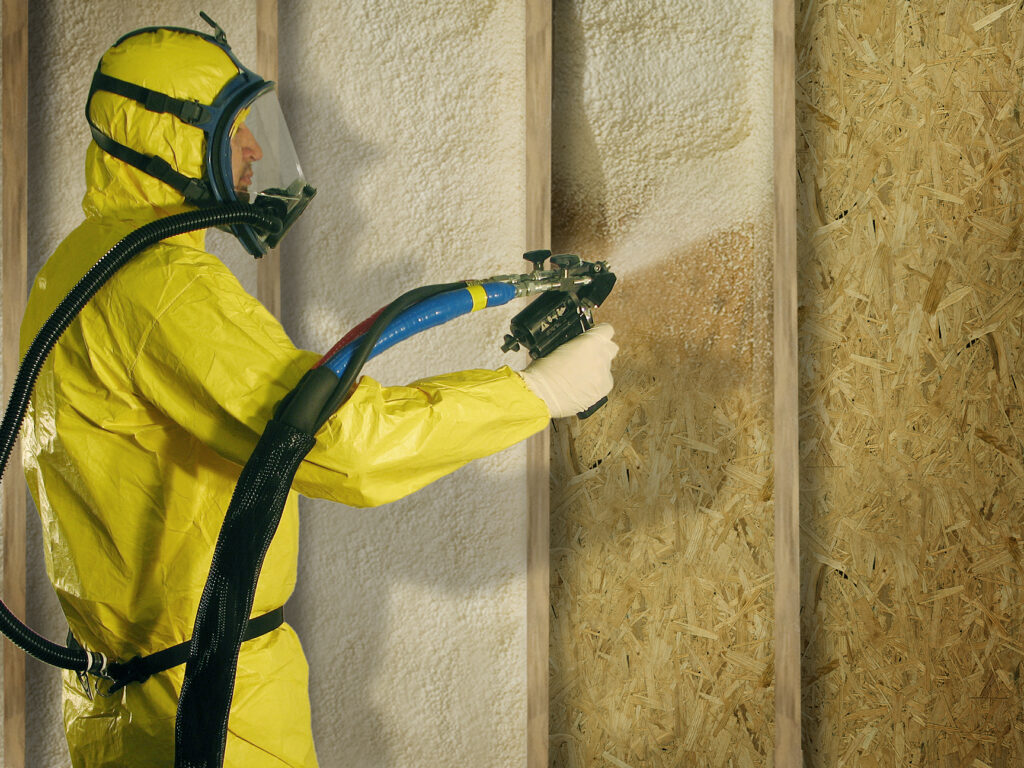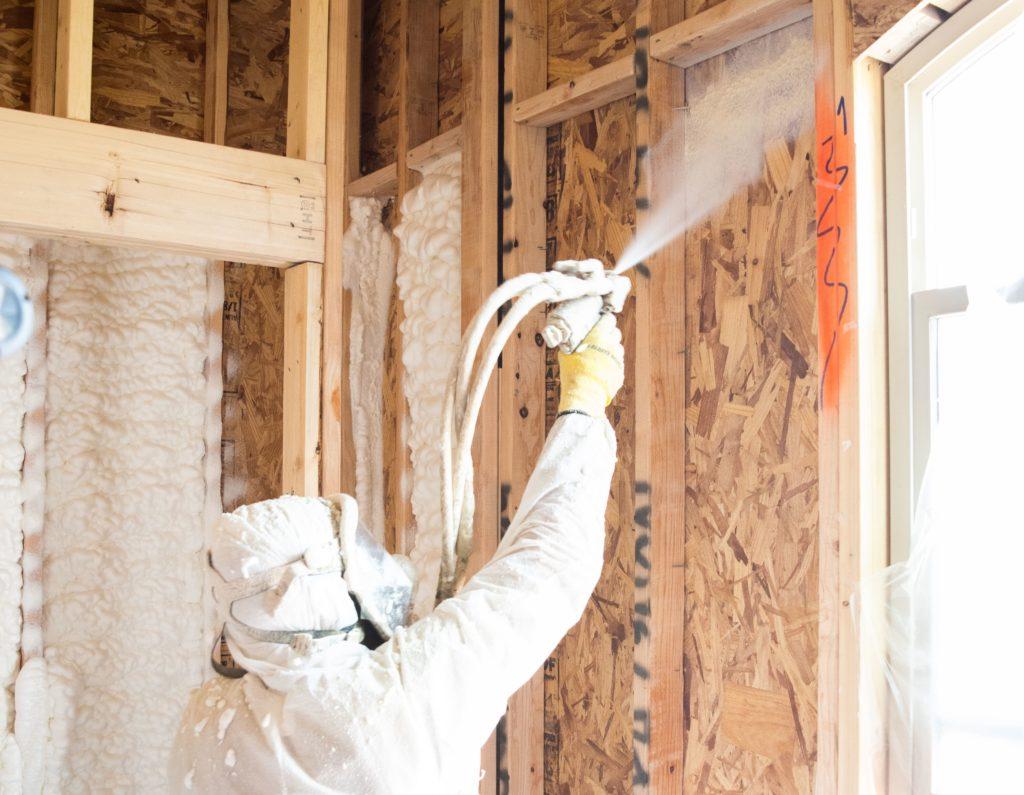
For homeowners in Georgetown, TX, the choice between low-pressure and high-pressure spray foam comes down to the scale of the job. High-pressure spray foam is the professional-grade system used for insulating large areas like entire attics, walls, and foundations. Low-pressure spray foam comes in smaller, portable kits and is designed for small, specific tasks like sealing air leaks around windows or filling gaps around plumbing. It is a choice between a comprehensive, whole-home solution installed by a certified professional and a targeted, DIY-friendly product for minor air sealing.
Attempting to use low-pressure kits for a large insulation project is a common mistake that often leads to poor performance and wasted money. Understanding the fundamental differences in equipment, application, and the quality of the finished product is essential for making a smart decision. This article, with practical input from experienced insulation contractors, provides a clear guide to help Georgetown residents choose the right tool for their specific needs.
High-Pressure Spray Foam: The Professional Solution for Whole-Home Performance
High-pressure spray foam is what a professional spray foam company in Georgetown, TX uses to insulate new homes and perform major energy retrofits on existing ones. It is a complex system that requires significant training and investment.
The Equipment
A professional high-pressure spray foam rig is essentially a mobile manufacturing plant. Housed in a truck or trailer, its components include:
- Two 55-gallon drums of the chemical components (an isocyanate and a polyol resin).
- A powerful generator and an air compressor.
- A sophisticated machine called a proportioner, which heats the chemicals to a precise temperature (typically 120-140°F) and pumps them at a specific ratio through heated hoses at over 1,000 PSI.
This precise control over temperature and pressure is what allows the chemicals to react perfectly, creating a foam with a consistent cell structure, optimal R-value, and maximum adhesion.
When to Choose High-Pressure Foam
High-pressure foam is the only correct choice for:
- Insulating the walls, floors, and roofline of a new home.
- Upgrading the insulation in an entire attic.
- Insulating the walls of a commercial building or barndominium.
- Any project larger than a few cubic feet.
The speed and volume of these systems make them highly efficient for large jobs, resulting in a lower cost per square foot than low-pressure kits.
Low-Pressure Spray Foam: The Right Tool for Small, Targeted Jobs
Low-pressure spray foam kits are designed for accessibility and convenience. They are available at many home improvement stores and are intended for homeowners and contractors who need to perform small-scale air sealing.
The Equipment
These kits are self-contained and disposable. They consist of two small, pressurized tanks (an A-side and a B-side) connected by hoses to a simple plastic spray gun. There are no heaters or pumps; the system relies on the pressure of the propellant inside the tanks, which is typically around 200-250 PSI. Single-component cans of spray foam sealant are an even simpler form of low-pressure foam
When to Choose Low-Pressure Foam
Low-pressure foam is an excellent choice for:
- Air Sealing: Filling the gap between a new window frame and the rough opening.
- Sealing Penetrations: Closing off the holes where pipes, wires, and vents pass through walls or floors.
- Small Repairs: Patching a small, damaged section of existing spray foam.
- Rim Joists: Sealing the rim joist in a basement is a common and effective DIY project for these kits.
Key Differences at a Glance
The Risks of Misusing Low-Pressure Kits
The most common issue seen by an expert spray foam contractor area is the aftermath of a well-intentioned but misguided attempt to insulate a large area, like an attic, with multiple low-pressure kits.
Performance Issues in the Texas Heat
The hot, humid climate of Central Texas demands a high-performance building envelope. The quality of the foam produced by low-pressure kits is highly sensitive to the temperature of the chemical tanks. If the tanks are not at the ideal temperature (often a challenge in a hot attic), the foam will not cure correctly. This can result in:
- Poor Cell Structure: Leading to a significantly lower R-value than advertised.
- Shrinkage and Poor Adhesion: The foam can pull away from the studs or sheathing, creating gaps that leak air and undermine the entire purpose of the insulation.
- Lingering Odors: Improperly cured foam can produce a persistent chemical smell.
Bonus Tip: Professionals always check the substrate temperature before spraying. In the Texas summer, a roof deck can get extremely hot. A professional crew knows to spray early in the morning before the surface gets too hot, which can affect the foam's reaction. This is a level of technical expertise that is not available to a DIY user.
Common Questions About Spray Foam in Georgetown
Why can't I just buy a bunch of DIY kits to insulate my attic and save money?
While the upfront cost might seem lower, the cost per board foot (a standard unit of foam volume) is actually much higher for DIY kits. More importantly, the risk of a failed application is very high. A professional may need to be hired to remove the bad foam before installing the new foam correctly, which can double the total cost of the project.
Is the 24-hour safety rule for re-entry the same for both types?
Yes. All two-component polyurethane foams produce vapors during the chemical reaction. The industry-wide safety standard is to have all people and pets out of the house during the application and for a full 24 hours afterward to allow for complete curing, regardless of whether it's a high- or low-pressure system.
Can a professional contractor use low-pressure foam for a small job?
Yes, and this is often a great solution. For a very small repair or air sealing job where bringing in a full rig would not be cost-effective, a professional may use a commercial-grade, low-pressure kit. The difference is that they have the training and experience to use it correctly.
Do I need a permit for a spray foam insulation project in Georgetown?
For a large project, such as insulating a new addition or a full energy retrofit, a building permit is often required. The city of Georgetown will want to ensure that the work meets the current energy codes, including the required R-values and fire safety measures. A professional contractor will handle the permitting process.
Does the foam from a low-pressure kit last as long as professional foam?
When applied correctly in the right situation (i.e., for small air sealing), the foam itself is a stable plastic that will last a long time. The problem is that when it is used for large applications, the chances of a poor installation that will shrink, crack, or fail over time are much higher.
Choose the Right System for a High-Performance Home
In the world of spray foam insulation, the choice between high-pressure and low-pressure systems is clear. Low-pressure kits are a valuable tool for small, specific air-sealing tasks. For the critical job of insulating the building envelope of a Georgetown home to protect it from the Texas heat, a professional high-pressure system is the only choice that guarantees a high-quality, consistent, and durable result. Instead of gambling on DIY kits for a large project, it's always better to rely on professional expertise.
Get a Professional Insulation Plan for Your Home
The best way to ensure your insulation project is a success is to start with a professional assessment. A qualified contractor can diagnose your home's energy performance issues and recommend the most effective solution using the right equipment and materials. For homeowners in the Georgetown, TX, area, the experts at Spray Foam Tech provide comprehensive consultations and professional installation services. They can be reached for more information at [email protected] or by phone at (737) 777-9590.
Reviewer: Maria Lopez reviewed the article and brought 12 years of insulation industry experience to improve the guidance. Practical tips were added, and the content was made clearer and more useful for contractors working in the field every day.







Comments